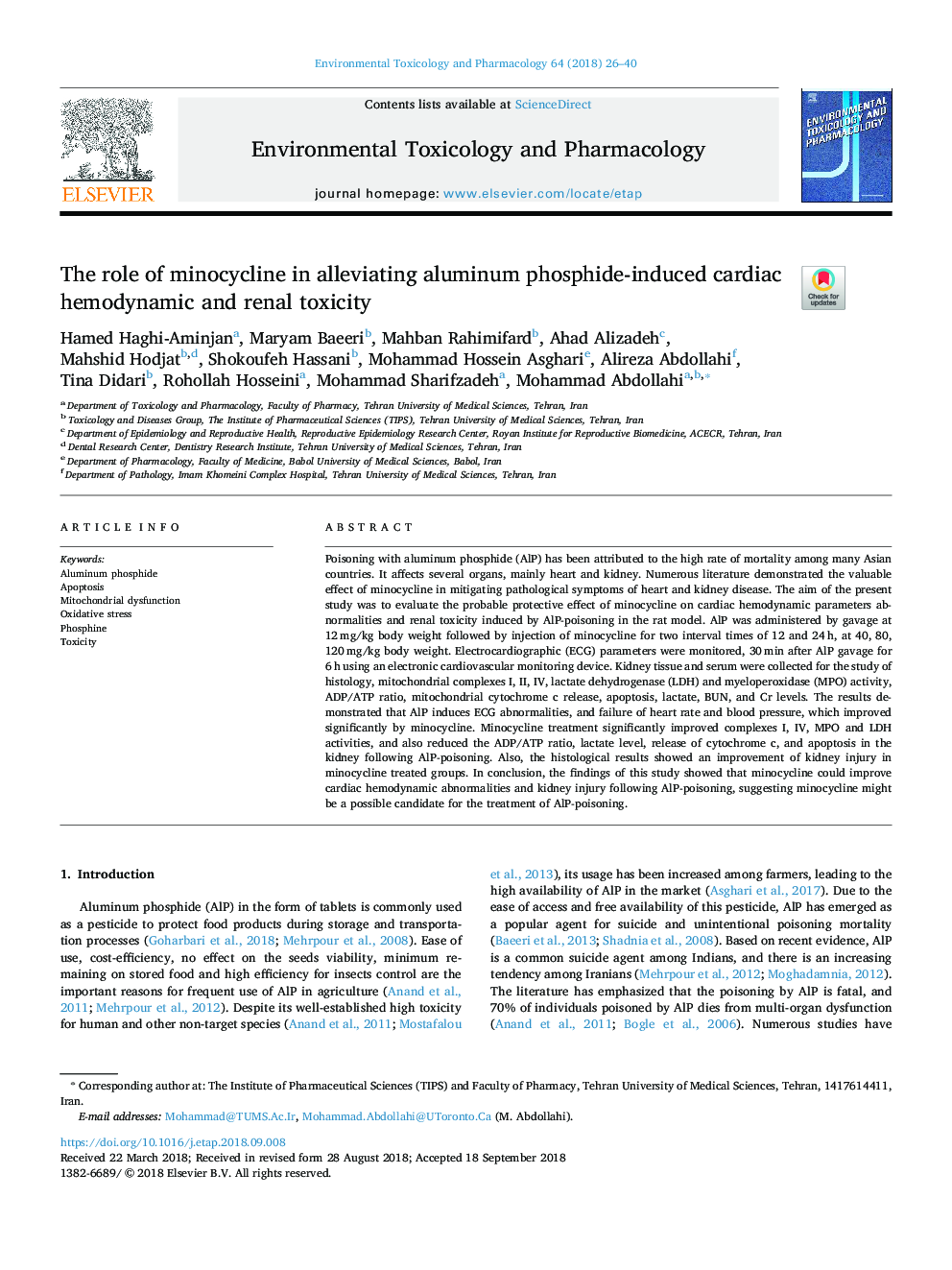| Article ID | Journal | Published Year | Pages | File Type |
|---|---|---|---|---|
| 11023027 | Environmental Toxicology and Pharmacology | 2018 | 15 Pages |
Abstract
Poisoning with aluminum phosphide (AlP) has been attributed to the high rate of mortality among many Asian countries. It affects several organs, mainly heart and kidney. Numerous literature demonstrated the valuable effect of minocycline in mitigating pathological symptoms of heart and kidney disease. The aim of the present study was to evaluate the probable protective effect of minocycline on cardiac hemodynamic parameters abnormalities and renal toxicity induced by AlP-poisoning in the rat model. AlP was administered by gavage at 12âmg/kg body weight followed by injection of minocycline for two interval times of 12 and 24âh, at 40, 80, 120âmg/kg body weight. Electrocardiographic (ECG) parameters were monitored, 30âmin after AlP gavage for 6âh using an electronic cardiovascular monitoring device. Kidney tissue and serum were collected for the study of histology, mitochondrial complexes I, II, IV, lactate dehydrogenase (LDH) and myeloperoxidase (MPO) activity, ADP/ATP ratio, mitochondrial cytochrome c release, apoptosis, lactate, BUN, and Cr levels. The results demonstrated that AlP induces ECG abnormalities, and failure of heart rate and blood pressure, which improved significantly by minocycline. Minocycline treatment significantly improved complexes I, IV, MPO and LDH activities, and also reduced the ADP/ATP ratio, lactate level, release of cytochrome c, and apoptosis in the kidney following AlP-poisoning. Also, the histological results showed an improvement of kidney injury in minocycline treated groups. In conclusion, the findings of this study showed that minocycline could improve cardiac hemodynamic abnormalities and kidney injury following AlP-poisoning, suggesting minocycline might be a possible candidate for the treatment of AlP-poisoning.
Related Topics
Life Sciences
Environmental Science
Health, Toxicology and Mutagenesis
Authors
Hamed Haghi-Aminjan, Maryam Baeeri, Mahban Rahimifard, Ahad Alizadeh, Mahshid Hodjat, Shokoufeh Hassani, Mohammad Hossein Asghari, Alireza Abdollahi, Tina Didari, Rohollah Hosseini, Mohammad Sharifzadeh, Mohammad Abdollahi,
